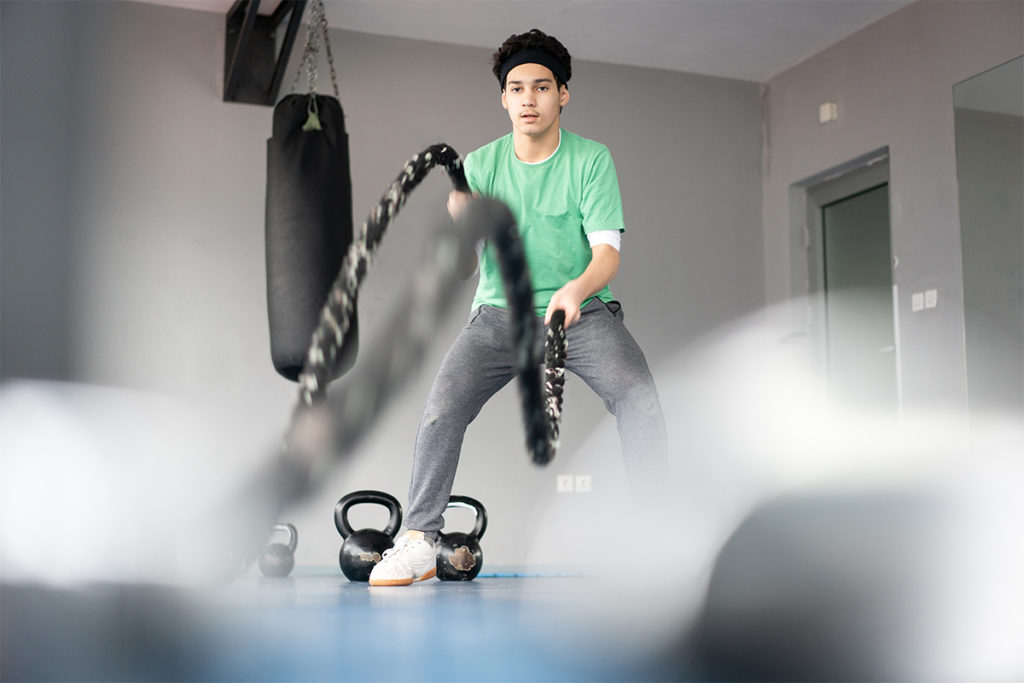4 Corrective Exercises for Bad Posture
Static posture refers to how we hold our bodies or assume certain positions, like sitting, standing or sleeping. The cumulative effect of the time we spend in these positions can lead to prolonged static-posture damage to the musculoskeletal and myofascial systems of the body. By addressing this effect in conjunction with an exercise program, you can ensure that clients remain pain free and fully functional.
Exercise Recommendations
The following exercises can be integrated into personal training sessions to alleviate static-posture imbalances. Think of the three “S”s—Sitting, Standing and Sleeping—when making adjustments to posture.
Thera Cane® on Back of Neck
This trigger-point massage technique is used to rejuvenate and regenerate the muscles and fasciae on the back of the neck. These can become chronically shortened as a result of arching the neck back and up to look at a computer screen.
Coach clients to apply steady pressure to any sore spots they feel on the back of the neck, from the top of the shoulders all the way up to the base of the skull. Perform for 3-5 minutes daily.
Foam Roller on Thoracic Spine
This myofascial release technique is used to reduce muscle tension and fascial restrictions in the soft-tissue structures of the thoracic spine. The roller also acts as a fulcrum to create extension in the thoracic spine.
Coach clients to lie back over the foam roller with a supported head. Teach them to posteriorly tilt (i.e., tuck under) the pelvis to reduce the tendency to arch the lower back. Instruct them to roll from the midback up to the shoulders while remembering to inhale and exhale. Perform for 2-3 minutes daily.
Doorframe Stretch
This integrated stretch helps condition the calves, hip flexors, abdominals, thoracic spine and shoulder girdle to extend the hips and hold the torso erect.
Instruct clients to step the right leg through a doorframe and keep the left leg back as they reach up with the left arm to the doorjamb. They should tilt the pelvis posteriorly and keep the left heel on the ground. Clients should feel this stretch in the front of the left hip, abdominals and back of the left calf. Switch to the other arm and leg. Repeat 1-2 times on each side.
Step Back With Arm Up
This integrated exercise stretches the hip flexors and abdominals while strengthening the gluteal muscles and thoracic extensors to extend the hips and hold the spine erect.
Coach clients to step back with the right leg as they swing the right arm up in line with the ear. As they step back, instruct them to engage the right gluteal muscles to push their hips forward. Make sure clients extend the thoracic spine and don’t overarch the lower back. Switch to the other arm and leg. Perform 3-5 repetitions on each side (photos show start and end positions).
For a more in-depth review of the effects of sitting, standing and sleeping on posture, please refer to the full article, “Corrective Exercise for Prolonged Static-Posture Damage,” in the online IDEA Library or in the April 2010 issue of IDEA Fitness Journal.

Justin Price, MA
Justin Price, MA, is creator of the BioMechanics Method® Corrective Exercise Specialist (TBMM-CES) program, the fitness industry’s highest-rated CES credential, with trained professionals in 80 countries. He is also the author of several books, including The BioMechanics Method for Corrective Exercise academic textbook, and he was awarded the 2006 IDEA Personal Trainer of the Year. He has served as a subject matter expert for numerous brands and media organizations including ACE, TRX® and BOSU®; the BBC, Discovery Health and MSNBC; Arthritis Today, Men’s Health, Newsweek, Time, WebMD and Tennis; and Los Angeles Times, The New York Times and Wall Street Journal. Learn more about The BioMechanics Method®








